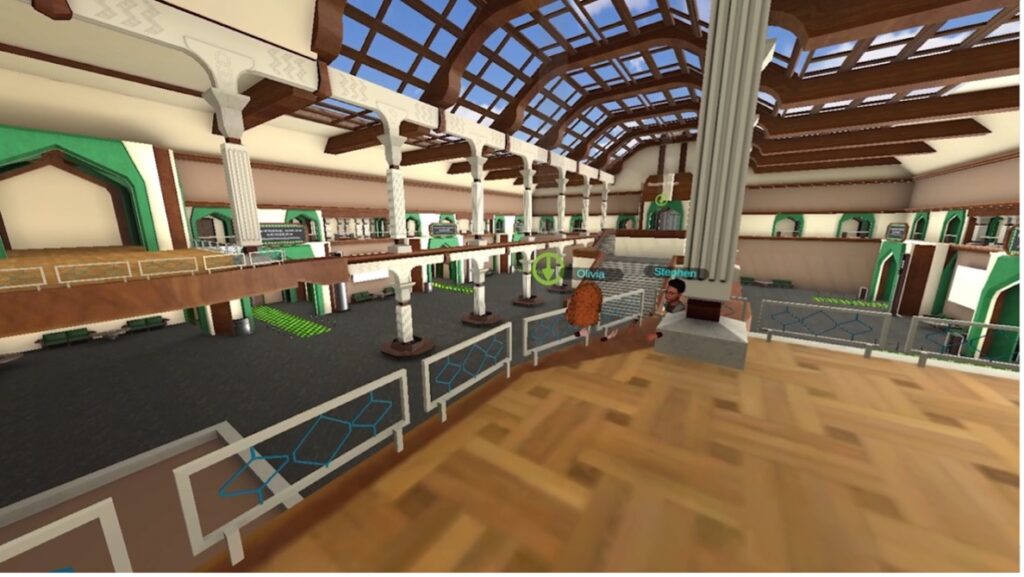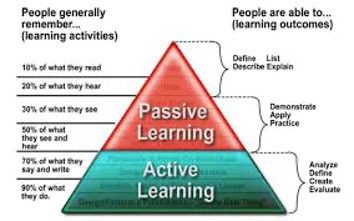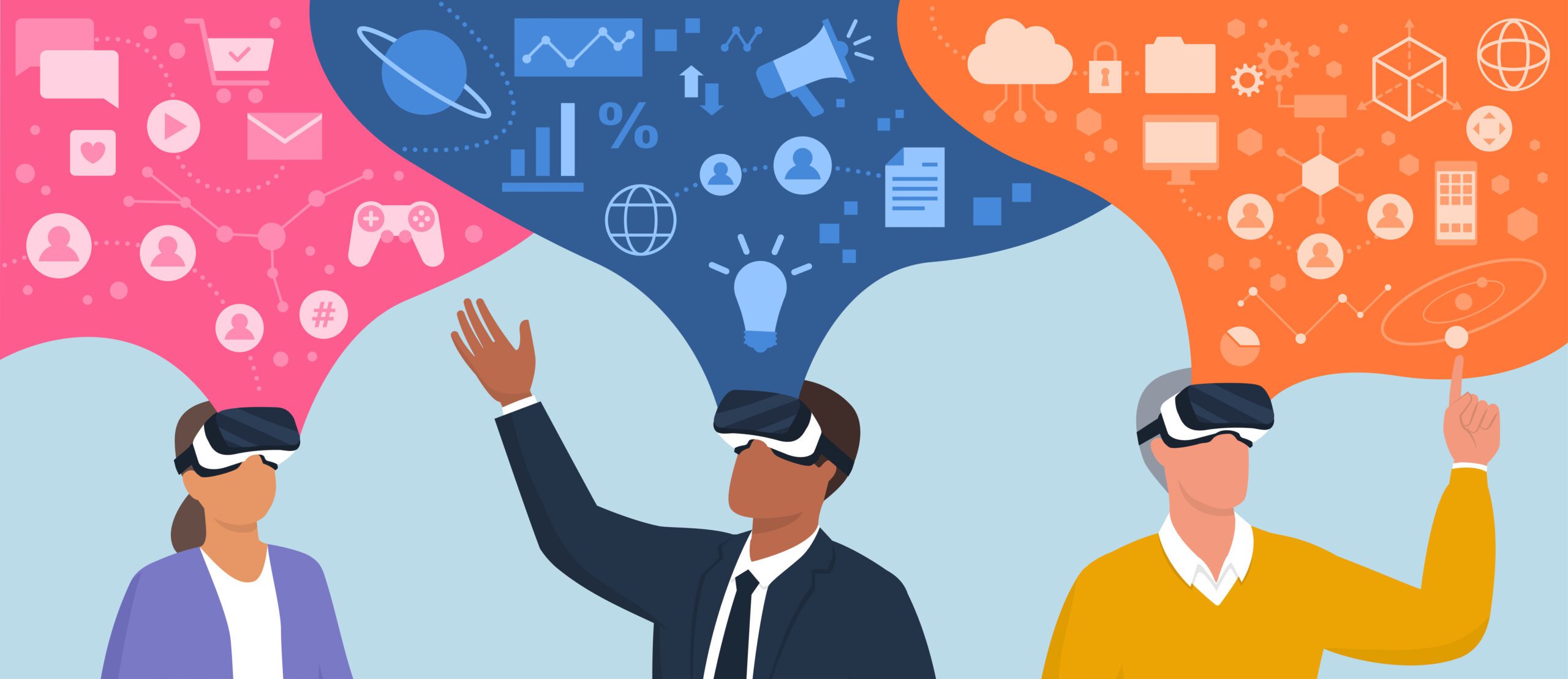Onboarding and training are two functions where organizations are struggling to get remote workers engaged. Even after a thorough, interactive online orientation or training session, employees often don’t feel fully prepared or connected with their teams, and there is a void between what they learned and practical application. It’s as if we are furiously mixing ingredients to make dough but forgetting to add the action-oriented ingredient (yeast) that helps all of us collectively rise.
Virtual reality uniquely eliminates the constraints of space and time, providing a new dimension with a true sense of presence for remote/global employees and managers to stay connected with one another, regardless of post-COVID work arrangements. Here are three VR attributes that can enhance the employee experience in today’s workplace.
VR is the great connector
There is a true sense of presence and belonging in VR and people can be just as productive and engaged — if not more — versus when in person. With VR, you can onboard new employees and organize “speed dating” rounds where they get to know leaders and colleagues with interactive media aids such as object spawning and sharing or virtual games to help break the ice. To reinforce team building and one’s corporate culture, you can engage new hires in a competitive scavenger hunt to locate assets on your digital twin campus. For example, we hosted a VR film festival on the Edstutia campus at the end of a video production module where participants showcased their final videos in our virtual movie theaters, complete with a “Now Showing” movie display at each theater entrance.

Some organizations lean into VR for impromptu, serendipitous social interactions as well as structured events such as virtual town halls or all-hands meetings. In both cases, VR proves to be an excellent way to permeate the company’s culture and enable employees to understand and practice relevant values and behaviors in an immersive — yet realistic — setting.
VR amplifies learning by doing
You can’t multitask in VR. You can’t hide in the back of the room in VR. There is a real sense of presence that keeps learners engaged. Now, the medium itself is immersive, but content is still king when it comes to VR because the exercises, simulations and experiences drive the engagement and impact. VR is the next best thing to face-to-face interaction and is a great alternative when distance, budgets and other barriers prohibit teams from being together in one place at the same time.

Through VR we can challenge employees to strengthen their skillset via immersive experiential or active learning. According to Edgar Dale and his Cone of Learning, people learn and retain much more when they “learn by doing.” Rather than reading and watching videos or demonstrations (passive learning), which result in sub-optimal learning outcomes, Dale suggests people who engage in active learning retain 90 percent of what they “do” and personally experience. These experiences result in meaningful learning outcomes. Adding VR to the mix amplifies active learning because, by default, learners are put into simulations and environments that require action.
VR enables deliberate practice in safe spaces
“Fail fast, fail often” is touted as a mantra to develop competencies. VR offers a safe space to experiment, push yourself out of your comfort zone, fail, reflect and bounce back. Consider this example: In transitioning veterans into civilian life and contemporary workplaces, VR is an effective alternative to in-person job training for vets with PTSD or those who have difficulty adapting to an entirely new lifestyle. VR provides a psychologically safe environment to practice and refine their interviewing and job preparedness skills.
Mock interviews in VR with scaffolded learning can help them work through the process of connecting their service-related accomplishments and skills to a modern-day workplace — all in the comfort of their homes. The ability to record and playback scenarios in VR provides plenty of opportunity to learn and practice on the spot via observation, self-reflection and coaching interventions. This kind of immersive experience can increase both speed to skill and confidence for optimal outcomes.
One of the greatest advantages of deliberate practice in VR is the ability to capture in-depth metrics across the Kirkpatrick spectrum, from learner satisfaction to application to engagement and long-term knowledge transfer. We recommend a 30-60-90-day structure to monitor and measure learning outcomes and long-term retention throughout VR training and practice, closing the assessment loop by ensuring learning “stickiness” is optimized within the VR experience design and delivery.
Recipe for success
So what is the recipe for success for incorporating VR in the HR function? Start small. Start slow. Test the waters.
We aren’t suggesting VR should be used as a replacement for attracting and developing talent, but consider it an enhancement to existing HR processes and programs. As we all transition to new workplace norms, hybrid workforces with more freedom and flexibility don’t have to lead to disengaged employees who feel isolated and disconnected. A VR headset and Wi-Fi can make a world of difference for your employees by showing them that you are embracing technology as well as their needs.
Editor’s note: This is the second of a two-part series on HR+VR. The first article explores the benefits and opportunities for blending human capital and the metaverse.













